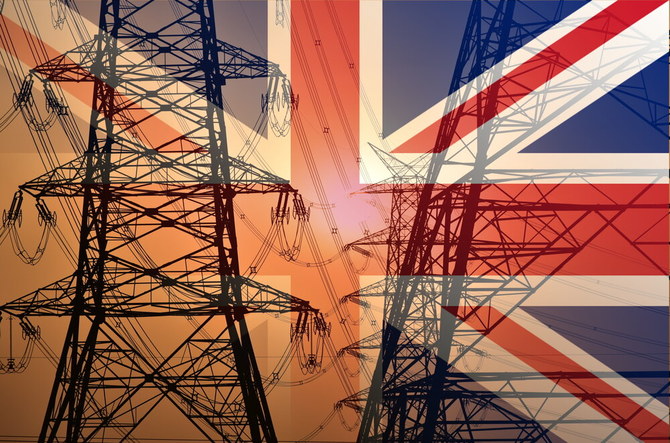Click To Switch Solutions
One Industry All
Solution
Exchange Prices For
Energy
And Switch
Defend yourself against growing energy costs. Allow us to assist you with switching now. World’s Best Leading Industry Corporation
Click To Switch Solutions Energy Supplier Survey 2020
6/10 households haven’t switched energy supplier in the last year
We conducted a survey of 1,000 energy customers

The Big Six
Who are the Big Six?
The Big Six are the UK’s biggest energy suppliers, they are:
-
British Gas -
EDF -
e.on -
npower -
Scottish Power -
SSE
69% of customers get their energy from one of the Big Six.
Our Products
As the leaders in our field, we provide the most stylish and dependable solution you can find.
The one and only location where you may find the ideal gas and electricity solution is Click To Switch Solutions.

Business Electricity
Operational power is provided by business electricity, which is crucial for sustainability, cost containment, and production.

Business Gas
Business gas is essential for production, heating, and other uses that have an influence on the environment and operating costs.

Business Card Machine
A company’s business card machine ensures an impressive, long-lasting impression by producing and cutting business cards with efficiency.

Business Development
Business Development focuses on identifying growth opportunities, building strategic partnerships to expand market reach and revenue while ensuring sustainable success.
Who is the best energy supplier?
We asked respondents to rate their supplier across four different criteria. Suppliers are ranked in order, top to bottom.
|
Supplier |
Value for Money |
Customer Service |
Complaints Handling |
Bill Accuracy |
Would Recommend |
Overall |
|---|---|---|---|---|---|---|
 |
7.9 |
7.7 |
6.9 |
7.8 |
80 |
7.7 |
 |
7.6 |
7.6 |
7.1 |
8.2 |
79 |
7.7 |
 |
7.5 |
7.7 |
6.4 |
8.4 |
78 |
7.6 |
 |
7.6 |
7.4 |
6.7 |
7.7 |
75 |
7.4 |
 |
6.8 |
6.8 |
6.3 |
7.7 |
70 |
6.9 |
 |
6.8 |
6.9 |
6.7 |
7.1 |
70 |
6.9 |
 |
6.4 |
6.5 |
6.0 |
7.1 |
63 |
6.5 |
 |
6.6 |
6.5 |
6.0 |
6.9 |
62 |
6.4 |
 |
6.4 |
6.4 |
6.1 |
6.7 |
65 |
6.4 |
 |
6.5 |
6.2 |
5.7 |
6.8 |
63 |
6.3 |
 |
6.4 |
6.2 |
5.5 |
6.6 |
59 |
6.3 |
1,000 bill-paying customers surveyed. Survey conducted November 2020
Save money on your energy bills
Gas & Electricity Price Comparison – Hints, Tips, and Helpful Information
Utility bills make up a sizeable chunk of household expenditure for most of us. With gas and electricity prices rising year-on-year, it’s more important than ever to find a way to cut costs down.
By far the quickest, easiest, and most effective way to reduce what you spend is to switch to a new, cheaper tariff (or tariffs). Use our comparison engine to find out how much you could save by switching to a new supplier today – it’s free, only takes a few minutes, and you’re not committing to anything by comparing. Best of all, you could save hundreds of pounds off your annual bill!
How does energy comparison service work?
Enter your postcodeso that we can make sure we’re showing you accurate prices
Let us know a bit about your current tariffincluding who your provider is and how much you’re paying/using
Choose a new tariff from the list we generate for you
Follow the simple steps, relax and enjoy the savings as us, your old supplier and your new one all handle the switch without you having to lift a finger
Types of gas and electricity tariff:
single fuel or dual fuel
Most newer-build properties nowadays only use electricity, so owners don’t have to worry about getting a gas tariff at all. But those of us with both gas and electricity supplied to our home need to make a decision: get both fuels from the same supplier, on the same tariff, or take out two separate contracts.
Taking out a dual fuel tariff (with both gas and electricity from the same supplier) is definitely the simpler option. You’ll only have to pay one bill, and deal with one supplier – making your life a lot easier. And most of the time you’ll get a better price when you get both fuels together. This isn’t always the case though. If price really is the most important factor for you when choosing a new deal, then it’s worth comparing dual fuel tariff prices in your area with the price of two separate single fuel tariffs just to make sure.
Types of gas and electricity tariff:
fixed rate or variable rate
The next choice you’ll need to make concerns how the price of your tariff is calculated. You’ve got two basic options:
With a fixed rate tariff, the price per unit of your gas or electricity is set in stone for a set period (typically between one and two years). Of course the actual amount you pay will depend on your usage, but you’ll be safe in the knowledge that at least that’s the only variable. You’ll be safe from any price hikes and while you also won’t benefit if prices drop, this doesn’t happen particularly often anyway.
Generally speaking, fixed rate tariffs mean lower prices, as well as security and predictability, and so are almost always the better option – though this isn’t always the case! Some suppliers, like Bulb, only offer a variable rate tariff, but it’s still cheaper than many other deals on the market – including many fixed rate deals.
The price per unit on a variable rate tariff will fluctuate in line with wholesale energy prices, as well as any changes in running costs for suppliers which might result from policy changes, for example. In practise, suppliers tend to be much more inclined to pass on price rises than any price drops to customers.
The most common variable rate tariffs are default, or standard variable tariffs (SVTs). These tariffs, which customers end up on after fixed rate terms end, or when they move into a new property, are responsible for a significant portion of overcharging in the energy market. SVTs are invariably the most expensive tariffs offered by any supplier, and yet a large percentage of customers are signed up to them.
You could be on a standard variable tariff if:
You’ve just moved into a new property
You haven’t switched to a new supplier for over a year
You can’t remember when you last set up a tariff
With a fixed rate tariff, the price per unit of your gas or electricity is set in stone for a set period (typically between one and two years). Of course the actual amount you pay will depend on your usage, but you’ll be safe in the knowledge that at least that’s the only variable. You’ll be safe from any price hikes and while you also won’t benefit if prices drop, this doesn’t happen particularly often anyway.
Generally speaking, fixed rate tariffs mean lower prices, as well as security and predictability, and so are almost always the better option – though this isn’t always the case! Some suppliers, like Bulb, only offer a variable rate tariff, but it’s still cheaper than many other deals on the market – including many fixed rate deals.
The price per unit on a variable rate tariff will fluctuate in line with wholesale energy prices, as well as any changes in running costs for suppliers which might result from policy changes, for example. In practise, suppliers tend to be much more inclined to pass on price rises than any price drops to customers.
The most common variable rate tariffs are default, or standard variable tariffs (SVTs). These tariffs, which customers end up on after fixed rate terms end, or when they move into a new property, are responsible for a significant portion of overcharging in the energy market. SVTs are invariably the most expensive tariffs offered by any supplier, and yet a large percentage of customers are signed up to them.
You could be on a standard variable tariff if:
You’ve just moved into a new property
You haven’t switched to a new supplier for over a year
You can’t remember when you last set up a tariff
What to look out for when comparing energy suppliers
If you’ve never switched before, it can seem a bit overwhelming. With a lot of different tariffs from a lot of different suppliers to choose from, and seemingly lot of information to take in, it can be tempting to just leave it and stick with what you’ve got.
But it really is a lot more straightforward than you might imagine. Here are a few key things to look out for when you do start comparing gas and electricity tariffs.
Tariff Comparison Rate
Since everyone’s usage is a bit different, it can be hard to properly judge the cost of any given tariff. Ofgem (the energy regulator) now make every supplier show what’s known as a Tariff Comparison Rate, or TCR, for each tariff. This gives you an estimated cost per unit (per kwh, or kilowatt hour) that includes any extra charges based on average usage so that you can easily compare one deal with another. The price indicated by the TCR is not final (as it will ultimately depend on your usage) but it will be uniform across different tariffs, making the comparison itself simple.
Exit Fees
If you’re on a fixed rate deal, and you choose to leave it before the set term is up, you’ll almost certainly be liable to pay exit fees to the supplier. The value will vary from supplier to supplier, but will typically be around £30 per fuel. Bear this in mind when you are comparing prices – if your prospective annual saving with a new supplier is £50, but you’re paying £60 to leave your current deal, then it’s probably worth waiting until the end of the term.
If you’re on a variable rate tariff, then you won’t have to pay exit fees. Additionally, some suppliers will offer to pay your exit fees for you if you switch to them, so keep an eye out.
Fuel Mix – Green Energy Suppliers
Climate change is a big issue nowadays. As such, a lot of customers are more and more keen on reducing their carbon footprint, and opting for an energy supplier who uses only or mostly renewable fuel sources is a great way to do this. Some suppliers, such as Bulb, Co-operative Energy, and Ecotricity, offer completely renewable energy.
Our website also has a number of helpful guides that cover everything you need to know about gas and electricity. These energy guides will answer all your questions about switching energy supplier. They will also tell you all about how to save money on gas and electricity in other ways, such as making your house more energy efficient and using different types of thermostats.
Since everyone’s usage is a bit different, it can be hard to properly judge the cost of any given tariff. Ofgem (the energy regulator) now make every supplier show what’s known as a Tariff Comparison Rate, or TCR, for each tariff. This gives you an estimated cost per unit (per kwh, or kilowatt hour) that includes any extra charges based on average usage so that you can easily compare one deal with another. The price indicated by the TCR is not final (as it will ultimately depend on your usage) but it will be uniform across different tariffs, making the comparison itself simple.
If you’re on a fixed rate deal, and you choose to leave it before the set term is up, you’ll almost certainly be liable to pay exit fees to the supplier. The value will vary from supplier to supplier, but will typically be around £30 per fuel. Bear this in mind when you are comparing prices – if your prospective annual saving with a new supplier is £50, but you’re paying £60 to leave your current deal, then it’s probably worth waiting until the end of the term.
If you’re on a variable rate tariff, then you won’t have to pay exit fees. Additionally, some suppliers will offer to pay your exit fees for you if you switch to them, so keep an eye out.
Climate change is a big issue nowadays. As such, a lot of customers are more and more keen on reducing their carbon footprint, and opting for an energy supplier who uses only or mostly renewable fuel sources is a great way to do this. Some suppliers, such as Bulb, Co-operative Energy, and Ecotricity, offer completely renewable energy.
Our website also has a number of helpful guides that cover everything you need to know about gas and electricity. These energy guides will answer all your questions about switching energy supplier. They will also tell you all about how to save money on gas and electricity in other ways, such as making your house more energy efficient and using different types of thermostats.
Why Choose Click To Switch Solutions
Easy Switching
Your desire a seamless transfer .our quick procedure take a few minutes to finish.
Expert Guidance
To choose wisely is what you want to do .Our Support Staff is here top assist you.
Exclusive Deals
You want to ideal
bargian.We provide
discounts that you wont
find any where



